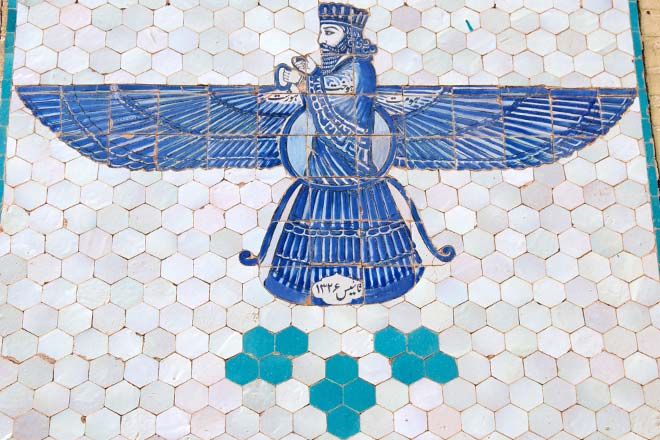
Theological radiance and messianic glory in Zoroastian and associated writings
Iranian religions: Zoroastrianisms and the theophanic Doxophan
The Gathic hymns and other early notions of radiant “glory” …. Hvareno…New Persian farr etc
Stephen Lambden UCMerced.
In progress 1980s rev. 2017.
A future eschatological, theophanic doxophany or outpouring the supernal glory in which the motif of the Divine, Radiance has a messianic disclosure or latter-day connotations, might be said to exist or be presupposed in various of the ancient Zoroastrian literatures, the Gathas, Avesta, Zend Avesta and other writings.
Hindu Messianism, theophany and glory.
The messiamc figures Kalki , the tenth Avatar of Vishnu ("[future] Benefactor") expected by some Hindus
R.C. Zaehner in his The Bhagavad Gita ... translates verse eleven and twelve, which are part of the picture of Krishna's universal form, his transfiguration (see chapter 11:9ff), as follows, "..[11] Garlands and robes celestial He wore, fragrance divine was his anointing. [Behold this] God whose every [mark] spells wonder, the Infinite, facing every way! If in [bright] heaven together should arise the shining brilliance of a thousand suns, then would that perhaps resemble the brilliance of that [God] so great of Self." (p.82-3)
Transliteration of the Sanskrit of verse twelve =
divi surya-saharasya bhaved yugapad utthitÿ yadi bhah, sadÿÿÿ sÿ syÿd bhÿsas tasya mah'ÿtmanah.
Article `Khvarenah' by G. Gnoli in Encyclopedia of Religion. ed. E;iade et. al., vol. 8: 297
The khvarenahis a lummous and radiant force, a fiery and solar fluid ... It is an attribute of Mithra, of royalty, of divine and heroic figures in the national and religious tradition, of Yima the first king, of Zarathustra, and of the three Saoshyants ...
See further Bailey, Zoroastrian Problems in the Ninth Centurv Books 71



